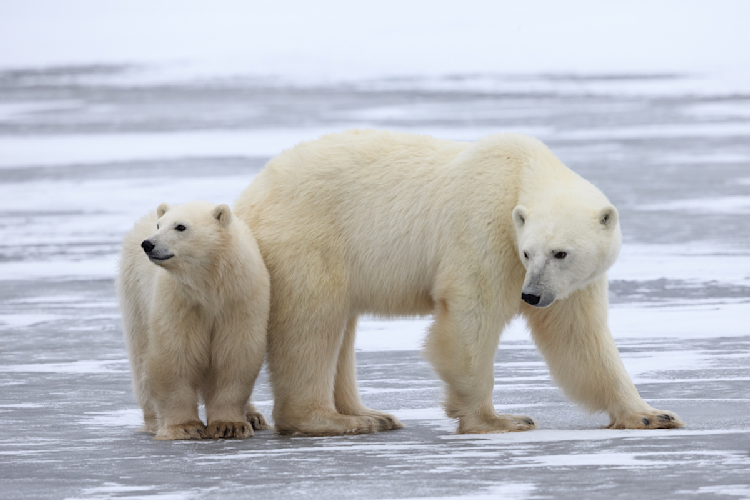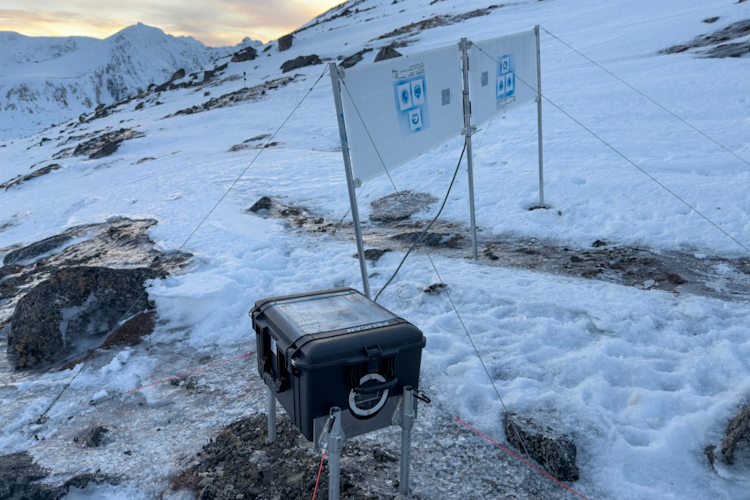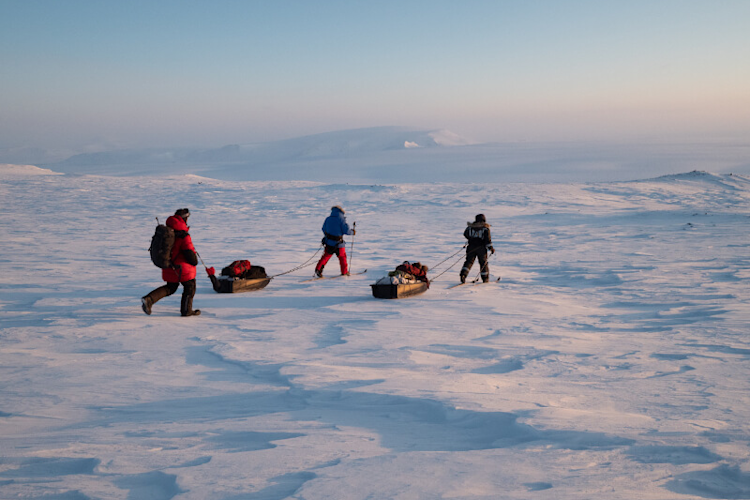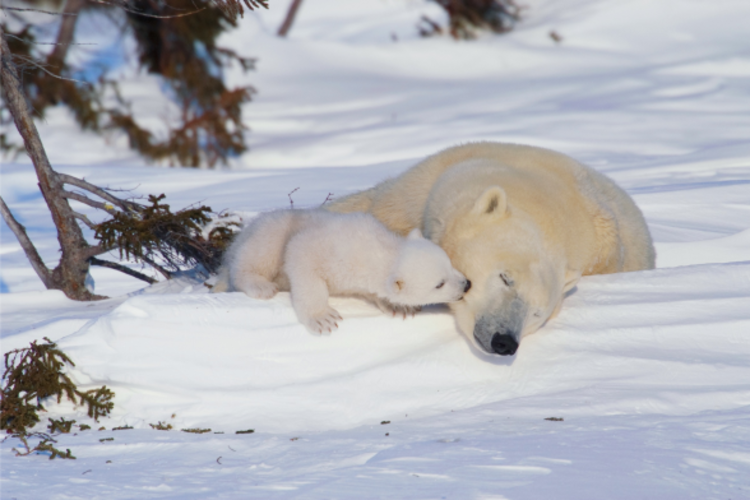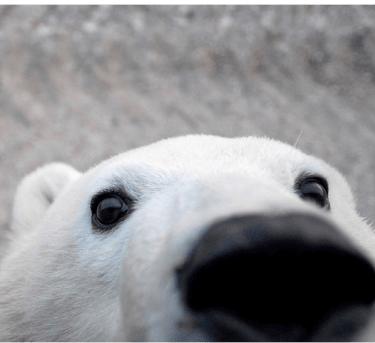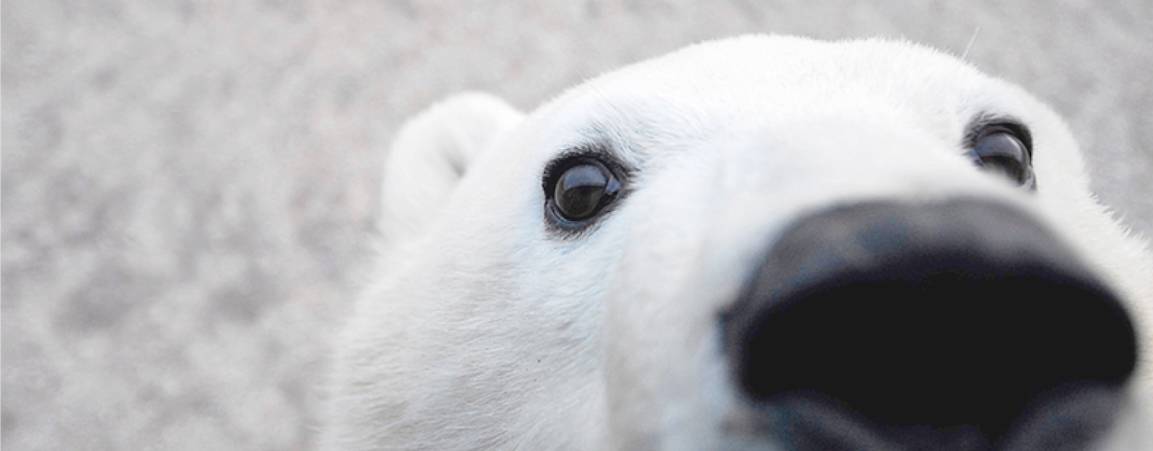Dr. Cassandra Debets is a PBI field ambassador, who in conjunction with PBI studied polar bear body condition in Hudson Bay and is presently studying the diet of ringed seals.
On the occasion of International Day of Women and Girls in Science, she took time out from maternity leave to talk about her career, her scientific progression, and any advice she might have for any young girls who want to be scientists.
First of all, what prompted you to pursue a career in science, and how long after that did you end up focusing on polar bears?
I’m from Winnipeg, born and raised, and I would say my passion for Churchill particularly grew when I was in 11th grade. My dad actually works in Churchill [as a buggy driver].
I got the opportunity to visit and, of course, seeing polar bears in their natural habitat was an amazing experience. It was very eye opening. And I think I was always interested in science. My dad also worked at the zoo, so I've always been very animal oriented. And then in university, I just kind of gravitated towards more of the zoology courses and found opportunities through the department at the University of Manitoba. And of course, because we're in Manitoba, there were a lot of Churchill field work opportunities or field courses that I took advantage of, and that just kept taking me back to Churchill.
Do you remember what you felt on that first trip to Churchill, when you first saw a polar bear?
My first bear sighting was a mom and two cubs. And I did what I think what most 15-year-old girls might do: I cried. I think seeing a mom and cubs is always a joy, and then to have that be my first encounter was very special.
Unfortunately, of course, when we talk about the polar bears of Western Hudson Bay, there’s the issue of how they’re being impacted by a changing climate. One of the areas that you have specialized in is studying their body condition.
With climate change, we know that the sea ice is breaking up earlier and forming later. And what I’ve had the opportunity to see over the last few years, going up every fall, is how variable it is each year. So, changes are happening almost as we watch, and looking at things like body condition is really important.
How did you conduct your research?
About 10 years ago, I had just finished my bachelor of science degree and Polar Bears International was piloting a study to monitor body condition through photographs. We found that using a camera and a laser range finder works really well to know the distance between the bear and the camera, and we could then use the pixels in the photos as a biological measurement. The main goal was to really ground truth using a non-invasive way to get this kind of information in populations where it just isn’t possible to dart bears or collect more in-depth data.
I worked on that project with PBI for about three years and it evolved into my master's thesis through York University. And that was my gateway into Arctic research, because I then turned to looking at ringed seals, because when we documented declines in body condition in bears, it led to the question: what about their prey? Are they just not eating as much? Or is there something going on with seals too? And at the time, the response was just a shoulder shrug. We didn't really know.
And what have you learned?
We’ve noticed that ringed seals’ body condition is declining a bit, in that their blubber layer on average is not as thick as it used to be. And that seems to be because their diet has shifted in Hudson Bay. Ringed seals primarily eat Arctic cod – which are not the same as large Atlantic cod, but are very small forage fish with an incredibly high lipid content. But those Arctic cod have been shifting northwards, retreating with sea ice. And so what we’re seeing is ringed seals, particularly in Hudson Bay, are consuming more capelin and sand lance, and these are thought to be more temperate fish that don’t have as much lipid on their body. So that might be affecting how much fat can get stored on the seal, which then, in turn, is how much fat a polar bear can get when they are hunting a seal.
I know that a lot of women trying to get into science can face all kinds of sort of institutional roadblocks and so forth. I’m aware that I’m speaking as a middle-aged white man, but I get the impression that the polar bear community seems to be pretty egalitarian and merit-based. Have you found any difficulties in getting into this field at all, or have you found that actually, if you’re a good scientist and you’re willing to work with people, that it really doesn’t matter who you are?
Definitely the latter. I’ve personally found that it’s a welcoming environment to fresh ideas. And yes, for women in STEM [science, technology, engineering, and mathematics] in general, there have been barriers. And I think Arctic research, too, was predominantly a male-dominated field 40 years ago, but now there’s greater diversity across the board in conservation; and, like you mentioned, what’s of value is having the work ethic to do good work and be collaborative, and that’s not something that you only see in women or only see in men.
And for me, having leadership and mentorship through PBI – which is actually, I would say, a women-dominated organization – I had a lot of role models who gave me a lot of insight and gave me a lot of tools. I would say at universities too, I’ve generally felt welcome, just given the passion that I have, and knowing that this was something that I really wanted to contribute to.
What advice would you give to any young girl reading this who dreams of one day being a scientist?
To do it! Definitely staying curious is the number one tool. Asking questions is really, I think, the secret to science. When you stop asking questions, then you're no longer doing science. But if you're asking questions and you have that curiosity, that's the skill that we want and that we use every day in our jobs.
There are always going to be times when some people might say, ‘Oh, this isn't for you.’ And that's not true for women at all. I think anybody can be a scientist if you're asking questions. That is the foundation, step one of the scientific method. So science really is for anybody and of any age, too. And so I would say: hopefully no one is trying to tell you that you can't do it; but if they are, I wouldn't listen, and I would just keep asking my own questions, being curious and trying to get the answers. And that's really what being a scientist is all about.




